Malawi once formed part of the Maravi Empire — an African kingdom founded in the late 15th century. The Maravis eventually became known as the Chewa — an ethnic group most Malawians belong to today. The 19th century brought Scottish missionaries including the famous David Livingstone.
He was one of the first Europeans to make the grueling transcontinental journey across Africa. Livingstone eventually made it to Malawi in 1859, after which several Scottish Presbyterian churches were founded throughout the country.
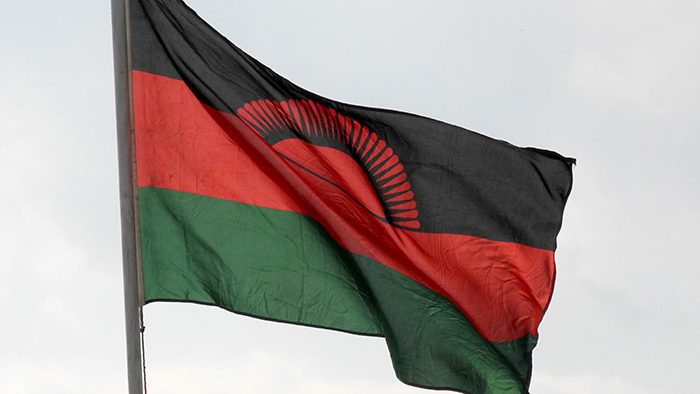
In 1891, the British assumed control of Malawi, and in 1907 Malawi’s name was changed to Nyasaland, meaning “land of the lake.” On July 6, 1964, Malawi became a self-governed country, and in 1966 it became an official republic.

Malawi is bordered by Tanzania, Mozambique and Zambia. It lies in Africa’s Great Rift Valley (a 6,000-mile crack in the earth’s crust), which gives the country a diverse terrain.
At 3,000 meters, Malawi’s Mount Mulanje is the highest mountain in Central Africa. In the south, the Zomba Plateau rises to a height of 2,000 meters. In the north, Nyika National Park is Central Africa’s highest plateau (2,500 meters).
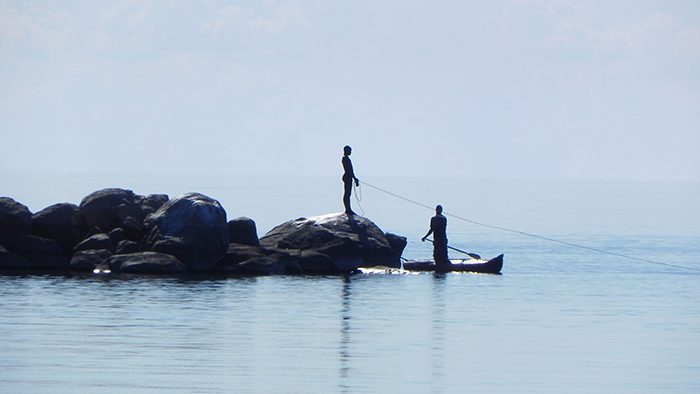
Lake Malawi, which is roughly the size of Belgium, is arguably the country’s most captivating natural wonder. Home to colorful cichlid fish and a variety of aquatic bird species, Lake Malawi is a paradise for nature lovers and boating enthusiasts. It is a source of pride and sustenance for the people and animals of Malawi.
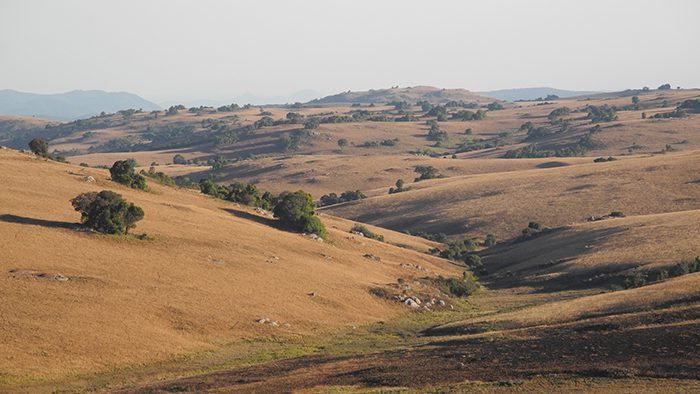
Malawi is a narrow, elongated country that is divided into northern, central and southern regions. North Malawi is the least populated part of the country, with Mzuzu serving as its regional capital. Though sparsely inhabited, Northern Malawi holds natural treasures such as the expansive Nyika National Park and striking Makuzi Beach.
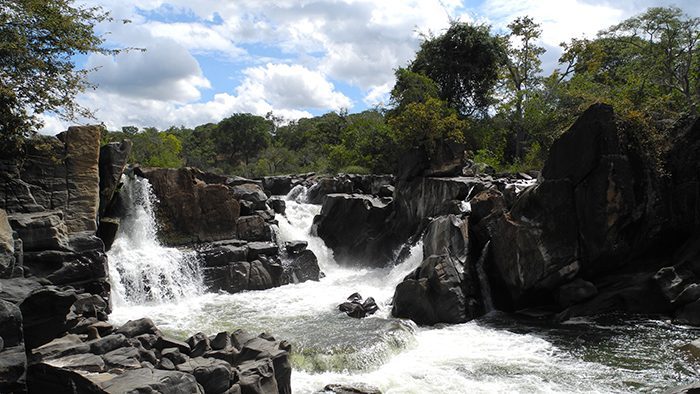
Central Malawi has five national parks and wildlife reserves, including Lake Malawi National Park, Nkhotakota Wildlife Reserve and Ntchisi Forest Reserve. Central Malawi is also home to the bustling capital city of Lilongwe. Southern Malawi is the most populated of the three regions. Here, the cities of Blantyre and Zomba serve as administrative centers. Farther south is Mount Mulanje, Malawi’s highest point. Here are 21 places you must visit in Malawi!

Off the Salime-Mzuzu Road, Chintheche sits pretty along Lake Malawi’s northern shore. Considered one of Malawi’s best beaches, Chintheche boasts fine white sand and lush, tropical surroundings that may fool you into believing that you’re on a Caribbean island. The Chintheche area is a popular weekend getaway for locals as well as tourists. A walk along Chintheche Beach will reveal crystal clear water and various clustered rock formations. The Chintheche area has fantastic accommodations for couples and families alike, as well as cultural and leisure activities. Farther south, Kande Beach is another beautiful stretch of lakeshore with lodging, camping and water sports.

Malawi has three main seasons: the cool-dry season (May through August), the dry season (September to mid-November) and the rainy season (late-November through April).

Located just short drive south from Chintheche is the Bandawe Mission, one of the earliest Christian missions in Malawi. Bandawe Mission was the second attempt by Dr. Robert Laws, a follower of D Livingstone, to establish a Livingstonia Mission. As with his first location at Cape Maclear, malaria took its toll on the missionaries and forced the survivors to relocate farther north on the Khondowe Plateau. Remnants of the old Bandawe Mission include the church and missionary graves. Although free to visit the church, leaving a small donation to the congregation is customary.

For an unforgettable day riding horses and exploring Malawi’s countryside, make time to visit the stables at Kande Horse. Family owned and operated, Kande Horse provides guided horseback rides as well as luxurious lodging in the guesthouse. Kande Horse is a working farm amidst tranquil, verdant surroundings. Take a ride through the lush Brachystegia forest, take a dip in the lake while riding bareback and stay for dinner if you so choose. For a longer stay, beautifully furnished guestrooms are available. Whether you’re looking for a day trip adventure or a B&B experience, Kande Horse offers an array of packages to suit your needs. Prices range from $30 for a one-hour ride to $240 for an overnight stay that includes breakfast, lunch and dinner with five hours of riding time. Advance booking for overnight stays is required.

Livingstonia is a site of particular historic and cultural interest. Located on the Khondowe Plateau, near Nyika National Park, Livingstonia is an early Christian mission. Established in 1894, Livingstonia was Dr. Robert Laws’ third and final attempt to establish a Presbyterian settlement in Malawi. The Laws’ family home is now a lodge and museum. The area boasts panoramic vistas of Chitimba Bay and the Livingstone Mountains across the lake in Tanzania. For visitors who want to spend the night walking distance from Livingstonia, The Mushroom Farm Eco Lodge is a good choice. The lodge was carefully designed to blend in with the natural forest surroundings. Each guestroom features a private balcony and open-air shower (with hot water). Lodge amenities include picnic tables, barbecue grills, and free Wi-Fi and cell phone/computer charging station. The Mushroom Farm Eco Lodge is glorified camping at its best.

Karonga is the first major lakeside town along the main road running north from Tanzania. Although not known to be a resort town, Karonga does attract a considerable amount of visitors. In addition to being an infamous slave-trading hub during the 19th century, Karonga has a museum that holds the skeleton of a prehistoric Malawisaurus dinosaur. Albeit basic, there are a few lodges and campsites here. Karonga is approximately 226 kilometers north of Mzuzu.
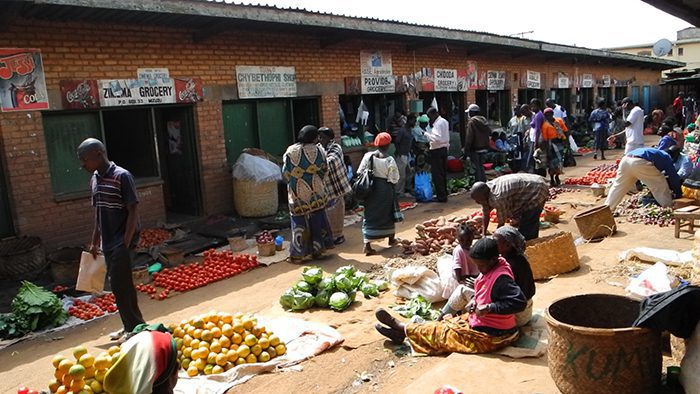
As the industrial capital of Northern Malawi, Mzuzu has experienced rapid growth in recent years. Mzuzu is famous for its light aromatic Arabica coffee, which is sold in supermarkets and served in restaurants throughout Malawi. Mzuzu offers very little in terms of accommodations and Malawi tourist attractions, and is more of a stopover for those traveling by car to Nyika National Park. If stopping in Mzuzu for a bite to eat, the A-1 Restaurant behind the main commercial strip of a grocery store and banks serves Indian and Chinese fare.
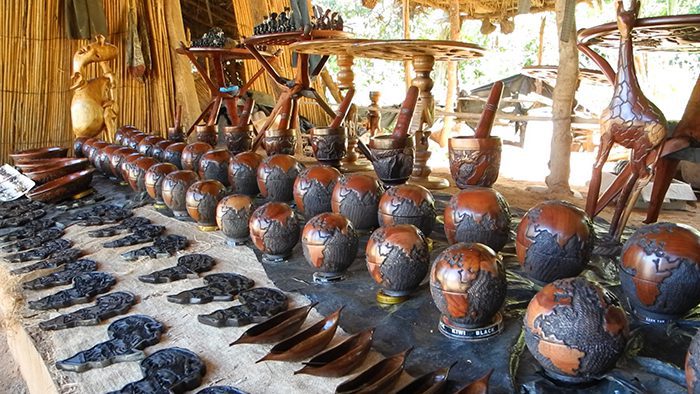
Nkhata Bay is a natural harbor and hub for the local fishing industry. Located about 40 kilometers southeast of Mzuzu, it is also home to a bustling crafts market. Here, the creativity and entrepreneurial spirit of the local artisans is proudly on display. Browse the several tents along the roadside until something catches your eye. Decorative bowls, masks, nativity sets, personalized key chains and necklaces are just a few of the items available. Chief chairs, one of the country’s most iconic products, come in all shapes and sizes. Nature (Baobab trees, cichlid fish) and village scenes (farming, gathering wood) are common themes found throughout the artwork. Common woods used include pine, ebony and ironwood. The Nkhata Bay crafts market is simple and modest, but holds fascinating treasures, large and small.

Nyika National Park sits high on the Khondowe Plateau in the district of Rumphi. With an area of 3,200 square kilometers, it is the largest of Malawi’s national parks. Its distinct grassland terrain is home to hundreds of animals including leopards, zebra, roan antelope, eland and the spotted hyena. Nyika is also a sanctuary for 425 bird species. In recent years, there has been an increase in Lichtenstein’s Hartebeest, elephant and lion sightings.
Check out Spotting Wildlife in Malawi

Nyika is a magical place where rolling hills, pine forest, rock clusters and dense patches of bush extend across a vast area. The low vegetation makes it easy to spot grazing herds during the day, while nightfall draws out those at the top of the food chain. Due to its elevation, Nyika experiences cool temperatures throughout the year. Rainy season brings carpets of blooming orchids and wildflowers. A Nyika safari is a must for anyone visiting Malawi.

About 70 kilometers northwest of Mzuzu, near the Zambian border, one will find Vwaza Marsh Wildlife Reserve. A regular stop for avid bird watchers, this 400-square kilometer area has a distinct terrain of both dense forest and sodden marshland. In the dry season large game like elephants, buffalo and hippos can be found gathered around Lake Kazuni. Nearly 300 species of bird also live here, including storks and herons. The Vwaza Marsh Wildlife Reserve is not one of Malawi’s popular parks, but it may be well worth the trip for the fervent bird enthusiast.

Dedza is a historical town about 84 kilometers southeast of Lilongwe. At 1,600 meters above sea level, it is the most elevated town in Malawi. Mature trees and views of Dedza Mountain form part of the beautiful landscape. Main attractions in Dedza include the Chongoni Rock Art Area, a UNESCO World Heritage Site. The rock paintings discovered here date back to the late Stone Age. Thousands of years later, artistic traditions are still being kept alive at the nearby Dedza Pottery Lodge. Craftsmen transform the local clay into an array of ceramic products including pots, vases, dinnerware, jars and tiles, all of which are for sale. Their bright and colorful works form part of Malawi’s long-standing artistic heritage. Dedza Pottery Lodge also has a convenient on-site restaurant for visitors.

A short drive east along a country road will take you to Mua Mission. Established in 1902 by Catholic missionaries, Mua Mission has few surviving original buildings except for the church and mission house, both of which were renovated in the 1990s. Within Mua Mission is the Kungoni Center dedicated to culture and art. Founded in 1976, the Kungoni Center has become a community of local carvers, painters and performers. In addition to its carving workshop, the Kungoni Center has a botanical garden and campsite. Its award-winning Chamare Museum teaches visitors about the local Chewa, Ngoni and Yao cultures. The museum holds a prized collection of Malawian masks that is unparalleled.

This 2,100-square kilometer park is located in the western central region of the country near the Zambian border, about 160 kilometers from Lilongwe. Kasungu National Park attracts birdwatchers and nature lovers alike with its array of flora and fauna. Contrary to popular belief, there are thriving populations of elephants here. In the past, poaching was a problem, but many animals like the leopard, zebra and jackal have made a comeback here. Hippos are a dime a dozen at the park’s Lifupa Lake, and the dense bush is home to a variety of small mammals like the civet cat and genet. The best game viewing is at the end of the dry season from August to November, when the animals cluster around the watering holes. For overnight stays, there is the affordable and eco-friendly Lifupa Conservation Lodge.

Lake Malawi is the brightest jewel in Malawi’s crown. With an area of approximately 29,600 square kilometers and a depth of nearly 300 meters, it’s the third largest lake in Africa and one of the deepest lakes in the world. It was previously known as Lake Nyasa — a name given by missionary explorer David Livingstone during his expeditions, which also explored areas surrounding Likoma Island.
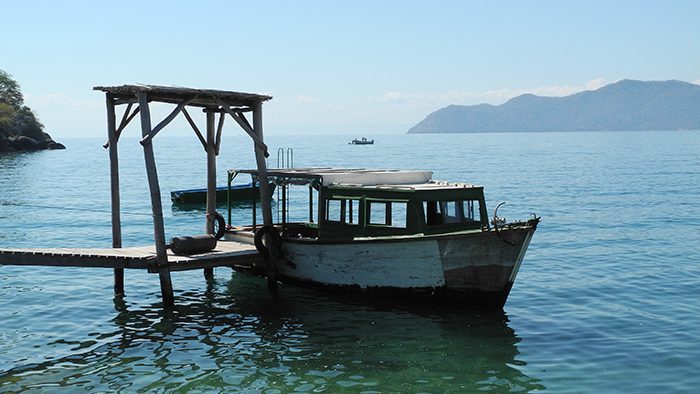
The lake is home to more than 1,000 species of cichlid fish, of which there are several variations that exist in an array of colors and sizes. In fact, Lake Malawi has the largest number of fish species of any lake on earth!
A boat ride on the lake also offers opportunities to observe its diverse aquatic life, and it supports a large number of aquatic birds such as african fish eagles, ducks, herons, cormorants, and kingfishers.
Check out our article The Best Hotels Around Lake Malawi

Lake Malawi is also a life source for many Malawians. Lakeshore villages depend on the lake’s bounty for survival. Non-cichlid fish such as Chambo, Kampango and Usipa are caught and sold in markets throughout the country. Malawi’s fishermen risk their lives every day as they paddle out far from shore on their hand-carved wooden canoes.
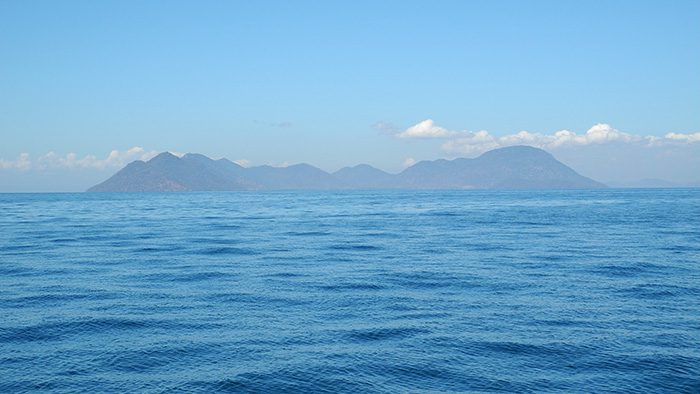
They use paraffin lamps to attract the fish to the surface in order to make it easier to net them. All through the night, Lake Malawi’s horizon can be seen dotted with tiny orbs of light given off by the fishermen’s lamps. This is how it earned its nickname, “Lake of Stars.”

Within Lake Malawi is a protected area of about 94 square kilometers that became the world’s first freshwater marine reserve. Lake Malawi National Park, which became a UNESCO World Heritage Site in 1984, is composed of the Cape Maclear peninsula, 12 islands, sandy beaches, swamps and lagoons.
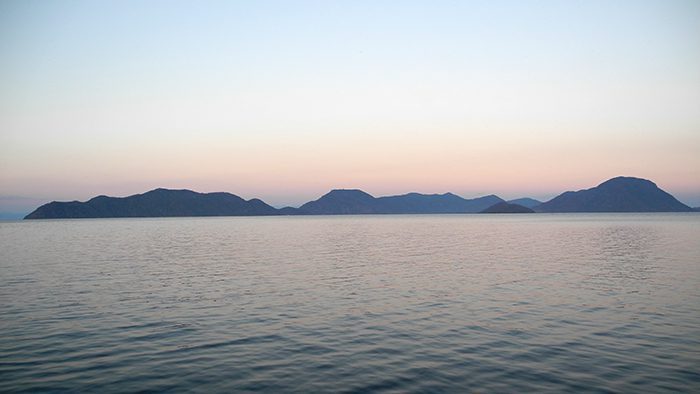
Activities in and around Lake Malawi are varied — swimming, snorkeling, SCUBA diving, kayaking, camping, hiking, bird watching, fishing and sailing, just to name a few. A visit to the lake, especially Lake Malawi National Park, is essential for anyone visiting Malawi.
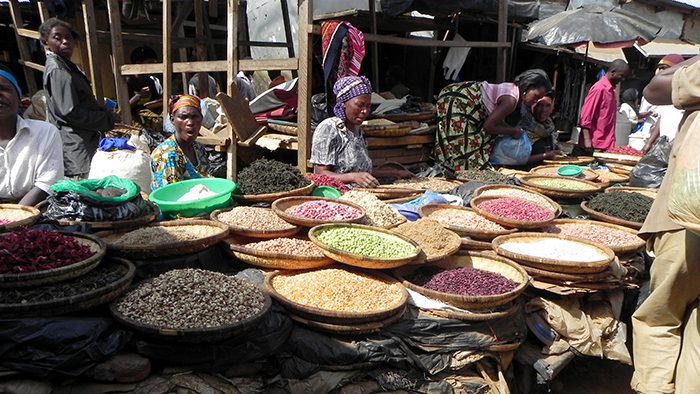
Since 1975, Lilongwe has served as Malawi’s capital city. Like Blantyre in the south, Lilongwe is an economic center that has seen substantial growth in infrastructure in recent years. The city itself is not a major tourist attraction, but is a regular stopover for most travelers flying into Kamuzu International Airport. Lilongwe is divided into the Old Town (south) and New Town (north), which can make getting around challenging since the there is a considerable distance between the two. Taxis are available at almost every hotel.
Crafts Market
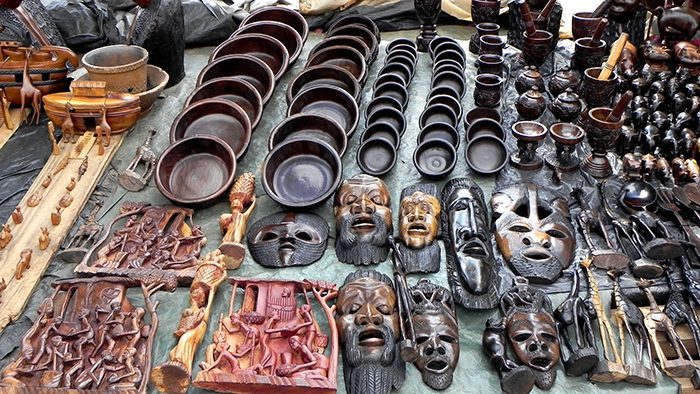
Vendors gather with their woodcarvings and trinkets at the Lilongwe crafts market. Although not as good as other markets throughout the country, you can still find souvenirs of all kinds, including personalized key chains and small figurines. The market is located outside the Old Town post office.
Lilongwe Wildlife Trust
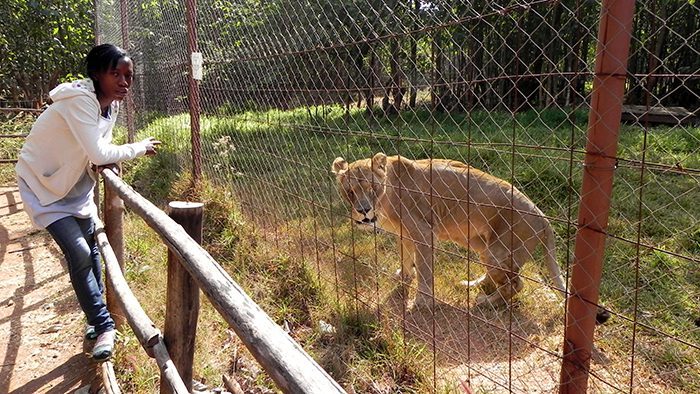
The Lilongwe Wildlife Trust (LWT) is Malawi’s only wildlife rescue and rehabilitation center. The LWT provides refuge to orphaned and injured animals, as well as teaches the local community about conservation. Through their efforts, the LWT manages to save many, but not all, of Malawi’s victims of poaching, deforestation and illegal animal trading. In addition to operating a comprehensive primate release program, the LWT conducts wildlife tours during which visitors can get acquainted with some of the permanent residents including Bella the lion and Kambuku the leopard. Locals and tourists alike are welcome to experience the center for themselves, to learn about the plight of the animals, learn ways to help and come away with a better understanding of Malawi’s precious wild animals.

The Nkhotakota Wildlife Reserve is 1,800 square kilometers of rugged woodland terrain cut by numerous rivers. Though rich in wildlife such as lion, elephant and buffalo, Nkhotakota’s dense vegetation makes sightings more difficult than in other places. Walking safaris, bird watching and canoe rides down the Bua River are the park’s main activities. What Nkhotakota lacks in visible animal herds, it more than makes up for in unadulterated peace and tranquility. The flow of the river and the symphony of nocturnal insects make Nkhotakota Wildlife Reserve a retreat for mind and body.

This lush patch of forest covers about 75 square kilometers and is located in the Ntchisi Mountains — a remote area dotted with rural villages. Not amongst Malawi’s most prevalent tourist destinations, the Ntchisi Forest Reserve is quiet, and for the most part uneventful unless you are a bird watching or hiking enthusiast. Orchids, wild mushrooms, exotic fruit trees and strangling figs are just some of the specimens endemic to the reserve. Towering trees and villagers’ small coffee plantations thrive on the wet weather of the rainforest. The Ntchisi Forest Reserve is a two-hour drive from Lilongwe.
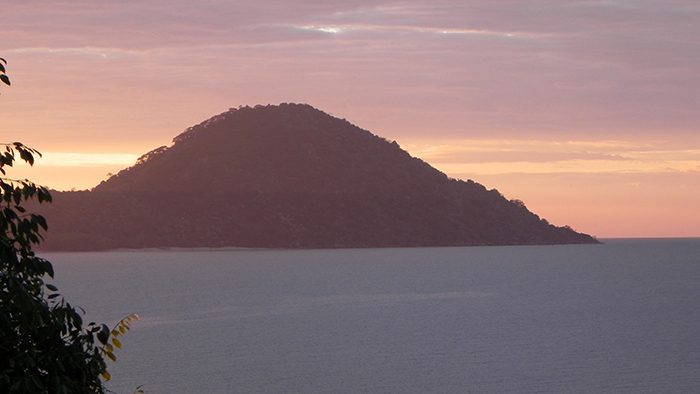
Salima is Malawi’s eighth-largest town and serves as an important trading center for the central region. About five miles east of Salima, along the lakeshore, is Senga Bay. Well known as for its resorts, Senga Bay offers accommodations for all budgets. The area mainly attracts local weekenders and business people. Activities include fishing village tours, a fish farm tour and water sports. We recommend Sunbird Livingstonia Beach.

Serving as Malawi’s commercial hub is the pulsating city of Blantyre. With a population of more than 700,000, it is a bustling center of industry. With hotels, restaurants and a major airport, Blantyre feels more like a cohesive city than the capital Lilongwe. Blantyre first began as a missionary settlement in 1876, making it the oldest municipality in Malawi. It was named after the Scottish town where missionary David Livingstone was born.

Blantyre was a major trading center for ivory, but now has several factories and industrial sites, all of which contribute significantly to the city’s economic stability. There are Western-style shops, many of which are located in the Chichiri Shopping Center. Here, the Central Bookshop store is stocked with stationery, novels, travel guides and coffee table books of Malawi. For crafts, head to the downtown crafts market in downtown. Here, vendors display their works, which include figurines, masks, decorative bowls and furniture. Good roads, an influx of university students and a sizeable community of expats make Blantyre a popular stopover for travelers headed to other parts of Southern Malawi. Things to see include historical buildings such as the St. Michael and All Angels Church and the Mandala House. Tobacco is an important cash crop for the country. Experiencing a live tobacco auction is a fascinating cultural experience. Head to the public gallery overlooking the tobacco auction floors at the Auction Holdings warehouse in Limbe to catch the action.
Carlsberg Brewery
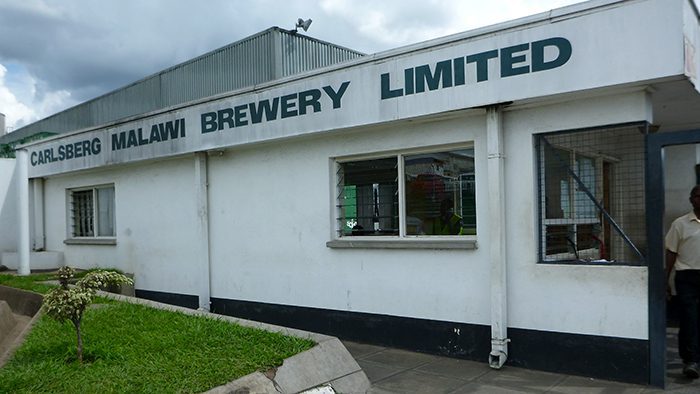
Carlsberg, a Danish beer brand, began producing and distributing its popular brew in Malawi in 1968. It was the company’s first brewery outside of Denmark. Since then, it has become the national beer of the country. Carlsberg Malawi Brewery Limited plays a key role in the country’s economy by enforcing ethical treatment of employees and contributing significantly to the GDP. Available brews include Carlsberg Green, Carlsberg Light, Carlsberg Classic, Carlsberg Elephant, Carlsberg Special Brew, Carlsberg Stout and Kuche Kuche. Visitors are welcome to visit the brewery.

Regarded as Malawi’s premiere game park, Liwonde National Park has a varied terrain spread over 548 square kilometers. Marshland, woodland and grassland comprise its landscape, which allows several animal species to thrive here, mainly hippos, elephants and crocodiles. And with healthy populations of more than 300 avian species such as Fish Eagle Pel’s Fishing Owl and Lillian’s Lovebird, Liwonde has outstanding bird watching.
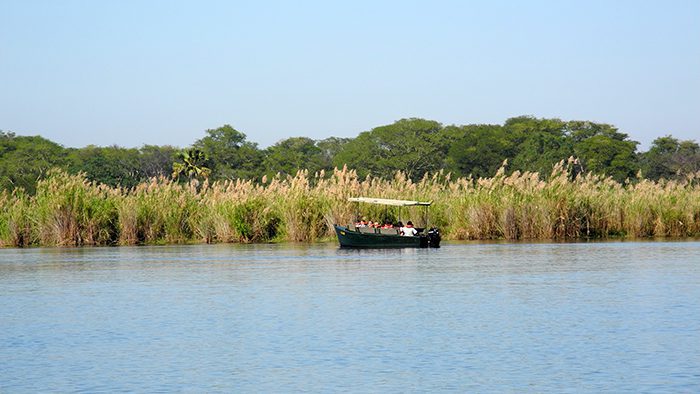
The central feature of the park is the imposing Shire River that flows along its western boarder. The river is Lake Malawi’s only outlet, flowing from north to south, emptying into the Zambezi River in Mozambique. Apart from supplying the park with sustenance, the Shire River is teeming with life. Colossal crocodiles, hippo pods and roaming herds of elephant rely on the mighty shire highlands for their survival. A mid-afternoon boat safari, when the sun is hottest and the animals come to the river to cool off, will reveal Liwonde’s diverse fauna.

Other residents include warthogs, baboons, leopards, sable and bushbuck. Thanks to local conservation efforts, the black rhino has been reintroduced. Nourished by the river and honored by Malawians, Liwonde National Park is a magical place that should not be missed!
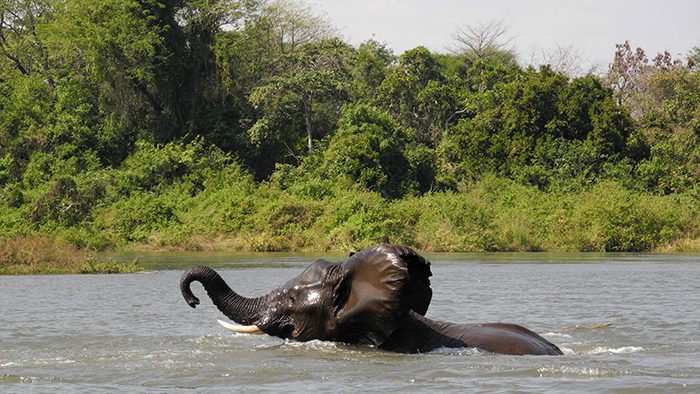
Like Liwonde National Park, the Majete Wildlife Reserve has made significant strides toward conservation and sustainability. Since 2003, many species such as the elephant, black rhino and leopard have been reintroduced to help make Majete a “Big Five” reserve. Thus far, the park’s animal populations have thrived under the protection of the African Parks and the Malawi Department of National Parks and Wildlife (DNPW.)
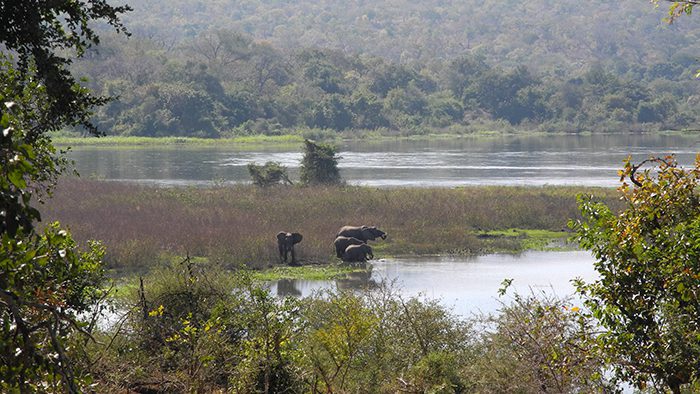
The Majete Wildlife Reserve is located in the lower Shire Valley. It has an area of 700 square kilometers and a diverse landscape of miombo woodland, dry savannah and marshes. Game viewing is excellent almost all year round thanks to a network of new roads and constant vigilance by park officials. Visitors can drive through the park in their own cars, with or without the assistance of a scout.
Check out our article the Top 4 Luxury Bush Lodges in Malawi

The park also offers a variety of activities including guided game drives, river safaris, bird walks, bush camping and village tours. Majete Wildlife Reserve also has an on-site restaurant, restroom facilities, cultural center and a visitor’s center located at the main gate. Low-budget accommodations include the community campsite and Thawale Lodge. For more information on visiting the Majete Wildlife Reserve.
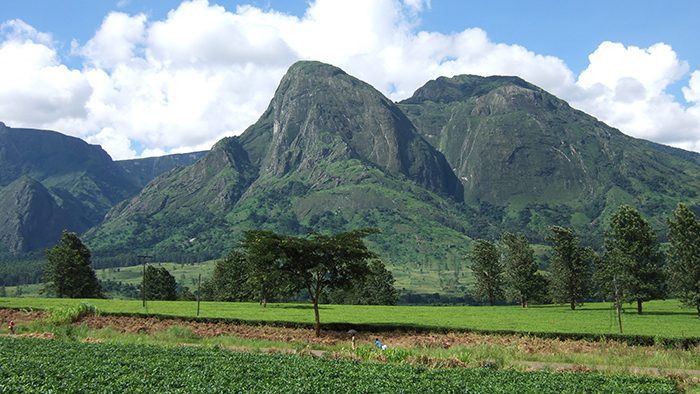
For hikers and climbers, Mount Mulanje is a must. At over 3,000 meters, Sapitwa Peak is the highest point in south-central Africa. The area surrounding Mount Mulanje is amongst Malawi’s most scenic. Sprawling tea estates, the Mulanje Golf Club, Likhubula Forest Reserve and Mulanje Town are just a few options for visitors. Most hikers first arrive in Mulanje Town, which is well equipped with hotels and restaurants. Hotel recommendation in Mulanje Town: Kara O’Mula Country Lodge.

Mount Mulanje forms part of a protected area known as the Mulanje Forest Reserve. The Mulanje Mountain Conservation Trust manages hiking and climbing activities. Hiking routes are clearly marked. There are 10 camping huts spread over the mountain for overnight stays. Each hut has cooking facilities, restrooms, mattresses and basic camping equipment. Hikes from one hut to the next can range from three to five hours. Mount Mulanje is just 65 kilometers from Blantyre. For more information, visit the Mountain Club of Malawi.
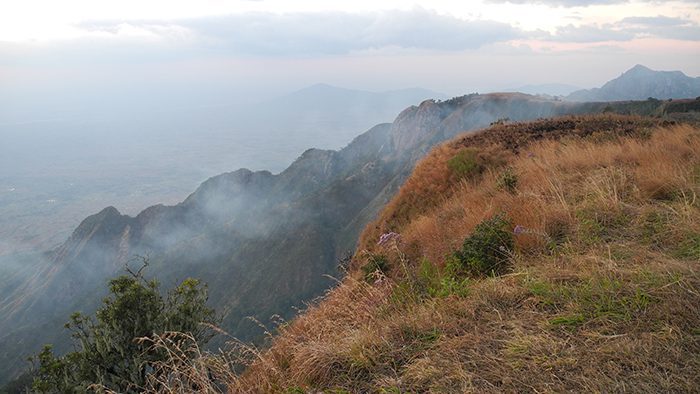
The lush Zomba Plateau has an area of 130 square kilometers. Just two hours away from Blantyre is this scenic stretch of rolling hills and dense forest. At the foot of the plateau is the city of Zomba, which was first established at the end of the 19th century as the seat of the British Administration of Nyasaland. The area surrounding it is mainly agricultural, with Zomba serving as a trading center.

The Zomba Plateau is a nature lover’s paradise where exotic birds, a verdant landscape and hidden natural wonders are abundant. Popular activities on the plateau include hiking, shopping at the Zomba crafts market and driving up to the two most popular viewing points, Emperor’s View and Queen’s View. Both reveal magnificent panoramic views of southern Malawi and Mount Mulanje with Mozambique in the distance. Zomba Plateau is also home to the Potato Trail, a historic path used by villagers taking their potatoes to sell in Zomba. It takes about one hour to take the path down to Zomba town.

Other points of interest include Williams Waterfall, Chingwe’s Hole (legendary cavern), King’s African Rifles Memorial, Malawi’s Chancellor College Botanical Gardens and a few surviving colonial buildings.
Located just a couple of hours away from Monkey Bay, the lush Zomba Plateau offers not only breathtaking views but also a variety of outdoor activities such as mountain biking and horse riding through picturesque tea plantations.
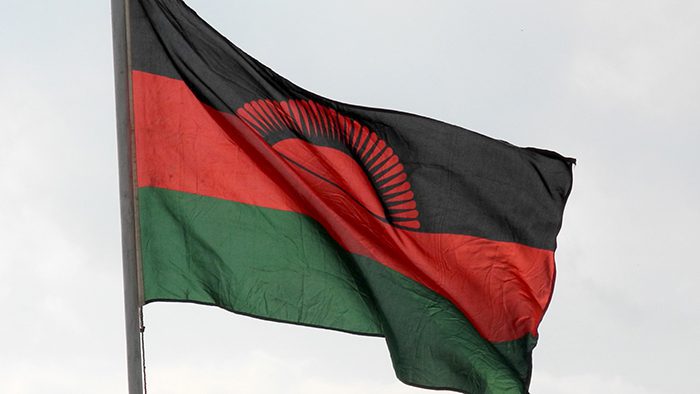
After traveling for years, it was nice to finally get the opportunity to visit sub-Saharan Africa. Malawi may be one of the poorest nations in Africa, but you wouldn’t be able to tell by the warm, genuine nature of its people. You would be surprised at the welcome you’ll get even in the country’s most remote villages.

Just when I thought the highlight of my trip was spotting a leopard in Nyika National Park, I arrived at the lakeshore. I’m not one to obsess over bodies of water, but Lake Malawi is a true wonder of nature and one of the most fascinating lakes I have ever seen. It is also one of the largest and deepest! The protected Lake Malawi National Park is home to fish eagles, cichlids, giant water monitors and a variety of other animals. From the beautiful lakeshore I moved on to the larger parks of Majete and Liwonde, both of which support thriving populations of elephants, hippos and crocodiles. River safaris are an excellent way to view and photograph these incredible animals.

As a growing nation, there have been considerable investments made in the tourism sphere, which means visitors can have their pick from a varied selection of luxury accommodations. Travel to Africa isn’t cheap and it is important to choose a destination that best delivers the experiences you’re looking for. Many tourists combine Malawi with a trip to nearby Zambia. A journey through both countries reveals incredible wildlife and stunning landscapes. But even if you choose to spend all your time relaxing along the shores of Lake Malawi, you’ll be in good company. As the “warm heart of Africa,” Malawi lives up to its name.
Time zone: GMT +2
Capital city: Lilongwe
Government: Democratic Republic
Languages spoken: English, Chichewa
Currency: Kwacha (MWK)
Currency converter: XE
Getting around: Finding your way around Malawi can prove challenging since many places are found only by recognition of “landmarks” such as buildings. Minibuses are a cheap method of transportation, but do not operate on a set schedule. Minibus accidents are common due to overcrowding of passengers and careless drivers, which is why we do not recommend them. Taxis are readily available in all cities. Taxi prices are negotiated prior to departure, as they are not equipped with meters. Most hotels, lodges and resorts will arrange pick-up and drop-off services for guests. There are a number of car rental companies to choose from. We recommend SS Rent A Car. They have offices in Lilongwe International Airport and in Blantyre.
Electricity: 220 – 230 volts. Most sockets take UK standard three-pin square plugs. Many hotels have their power supplied via gas generator or solar panels. To charge laptops, cell phones and camera batteries, always use a surge protector.
Shopping: Supermarkets can be found in towns and cities, with the largest ones located in Blantyre and Lilongwe. There are also many crafts markets where tourists can stop and purchase souvenirs. Here is an article we wrote about craft markets: Malawi’s crafts market and advice on how to bargain with the vendors. Most gas station shops sell snacks, sodas and bottled water. The Old Town Mall in Lilongwe and Chichiri Shopping Center in Blantyre are two of the Malawi’s premiere shopping venues.
Lake of Stars Festival: The Lake of Stars Festival is an annual three-day music and arts festival held on the shores of Lake Malawi. It showcases a diverse lineup of local and international musicians, artists, and performers across various genres, aiming to promote Malawi tourist attractions and support local communities.
Major airports:
Lilongwe International Airport AKA “Kamuzi International Airport” (LLW)
Lilongwe
+265 (0)1 760 266
+265 (0)1 760 311
Chileka International Airport (BLZ)
Blantyre
+265 (0)1 694 322
Entry requirements: Travelers must have a passport with six months validity remaining. Tourist visas must be obtained prior to travel. Tourist visas are not required for most commonwealth countries, USA, Japan and most European Union countries. For more information, e-mail permit@immigrationmw.com or refer to your corresponding Malawi diplomatic mission.
Best time to go: May through August when the chance of rain is slim and temperatures are in the 20s (°C).
Health: Immunization for polio, tetanus, typhoid and hepatitis A are recommended. For travelers entering from a yellow fever zone, certificate of yellow fever vaccine is required. The principle health risk for travelers is malaria, which is contracted through a bite of the anopheles mosquito. The condition is serious and often presents with flu-like symptoms. Malawi’s medical staff is familiar with malaria and the drugs to treat it are readily available at hospitals and medical clinics throughout the country. Some precautions to take to avoid malaria: wear insect repellent, sleep under a mosquito net, wear long sleeves and pants in the evenings and take prophylactic medication (which can be obtained with a prescription from your doctor or local travel clinic). Immediate medical attention is necessary! Self-medicating could be dangerous. Malawi has a high rate of HIV infection. Drinking bottled water is recommended.
Practical advice:
Have you been to Malawi? What did you think of the 21 places you must visit in Malawi? Leave a comment below!
Counter
101 Countries • 1432 Cities
Lena Nyakanini says:
Great information there! Thanks much.
gabrielle powell says:
heading to Malawi in May-June – solo woman – volunteering for organisation there… booked to stay in cottage with ex pat.. might need to hire car and drive versus taxi and driver? what would you recommend.. best to have US $ for tips – shopping? hope to fit in some of these sites thanks for the info
David says:
Hi Gabrielle,
It’s best to get a driver over driving. Also go with the Malawian currency, it will give you the most bang for you buck!
gabrielle powell says:
thanks for your reply 🙂
Ray says:
This looks like an amazing country to visit! Given its relatively small size as a country, how much time would you recommend spending here to see all of these sites that you suggested?
David says:
Hi Ray,
Its actually fairly big. It took us 22 days to see everything on this list and we were rushing a bit with 2-3 night stays in each destination.
I would say 3-4 weeks to see all this.